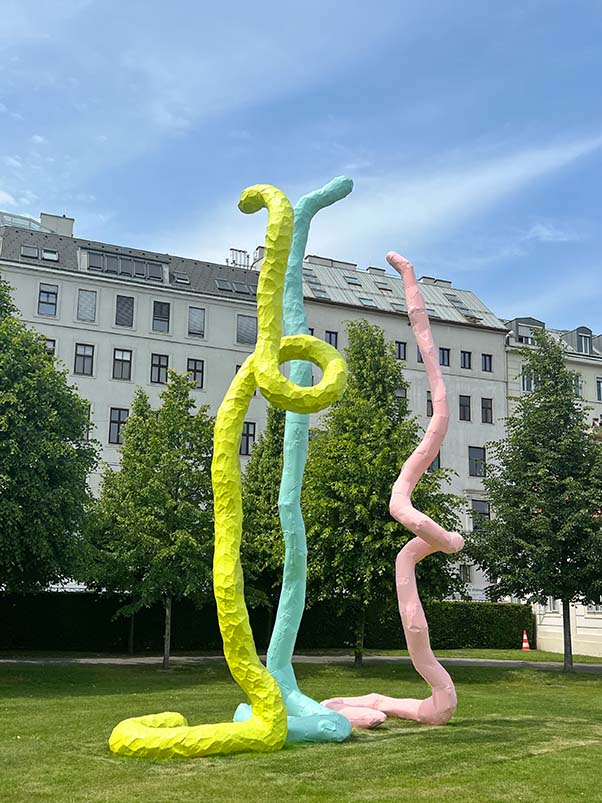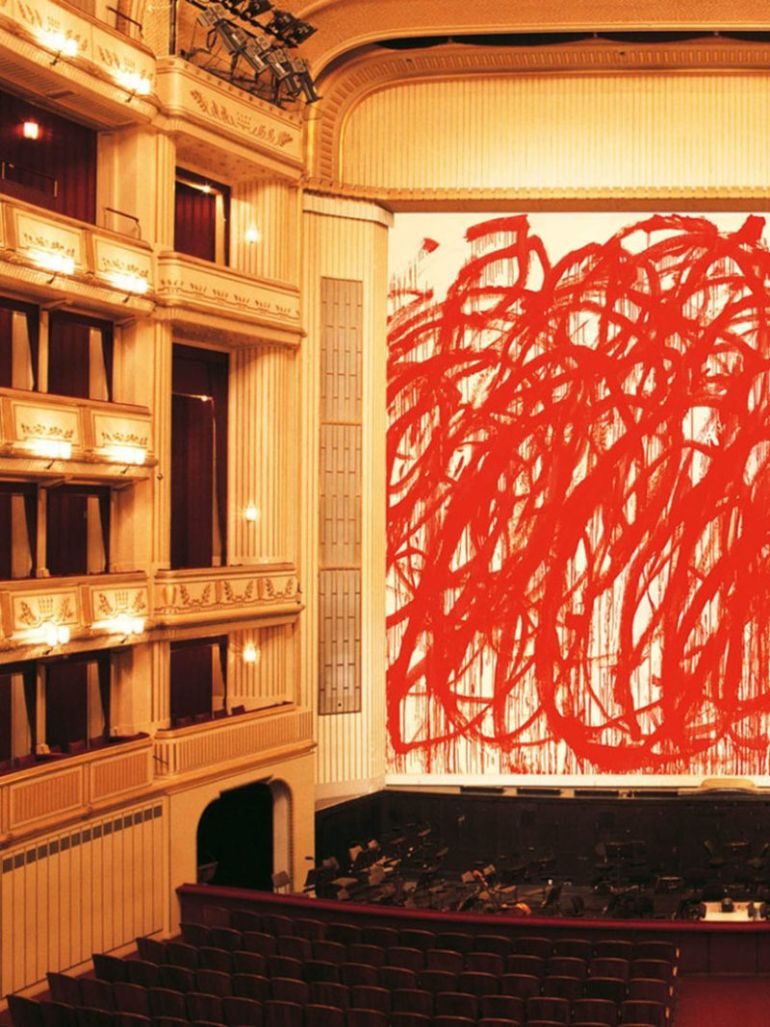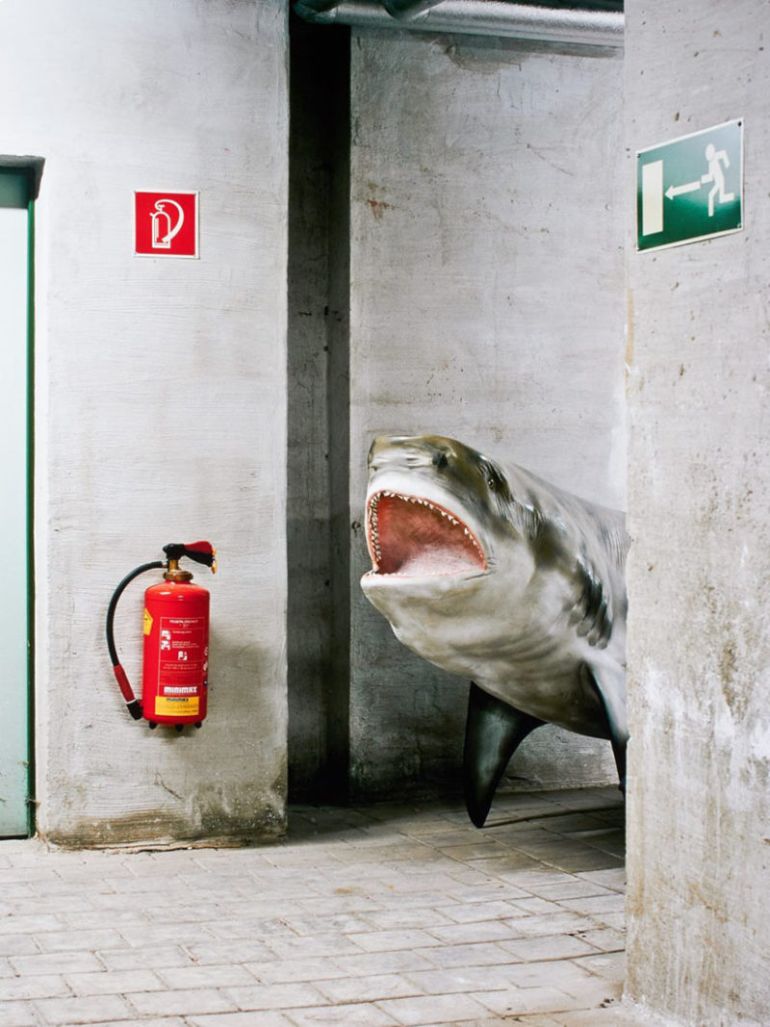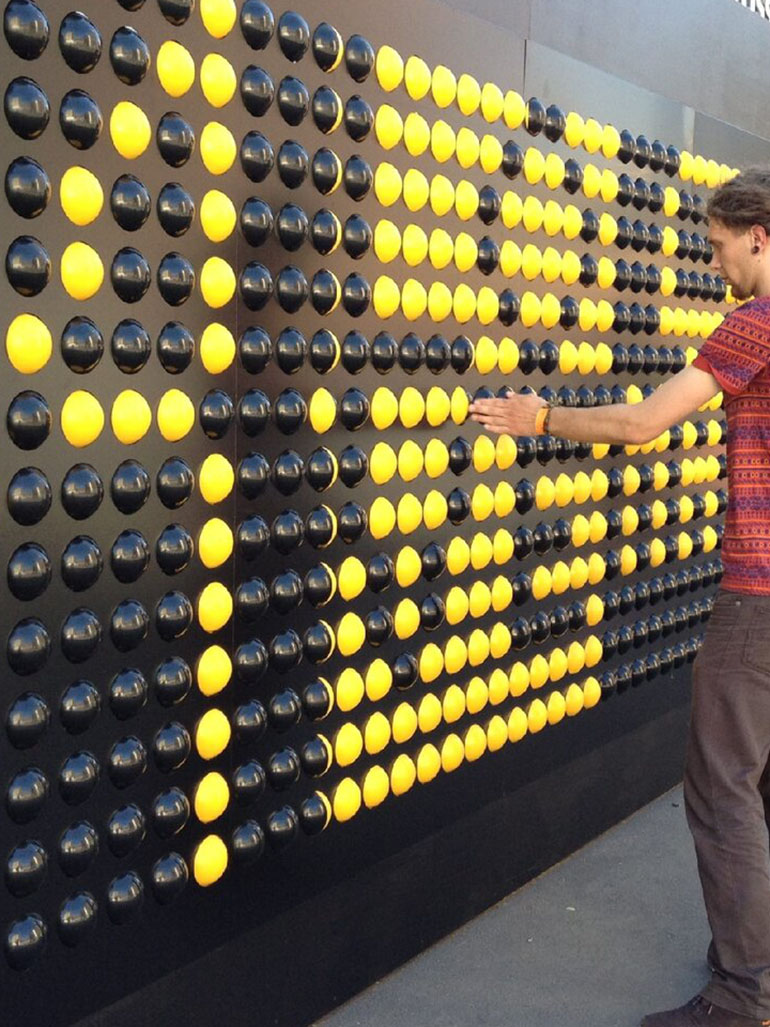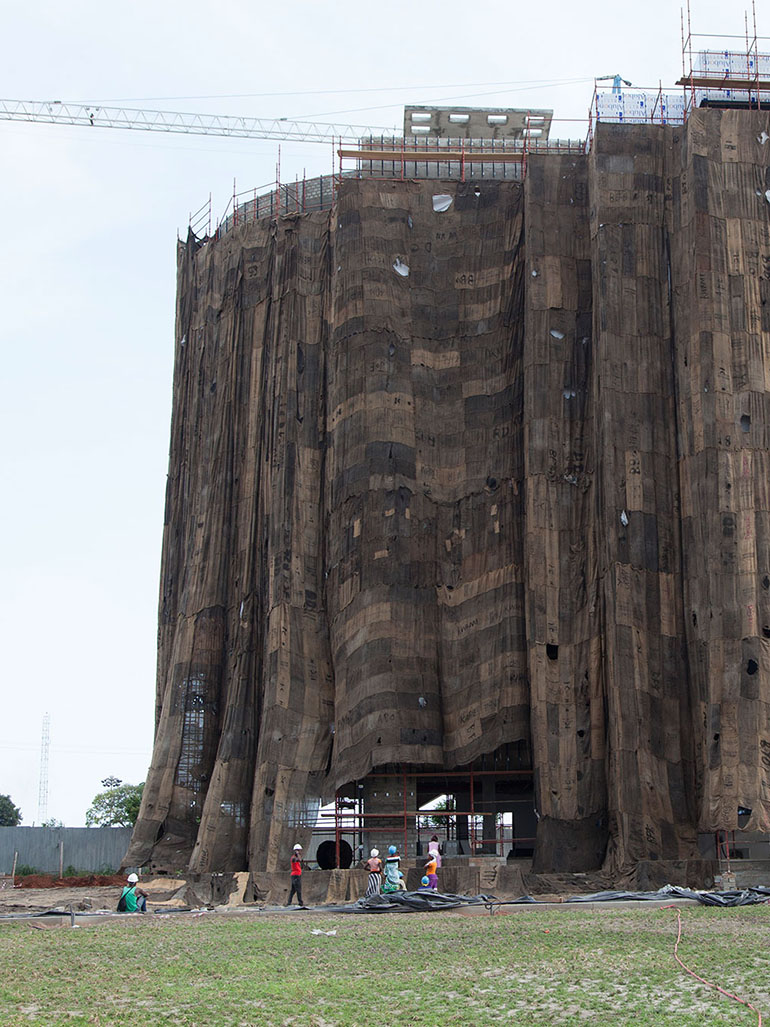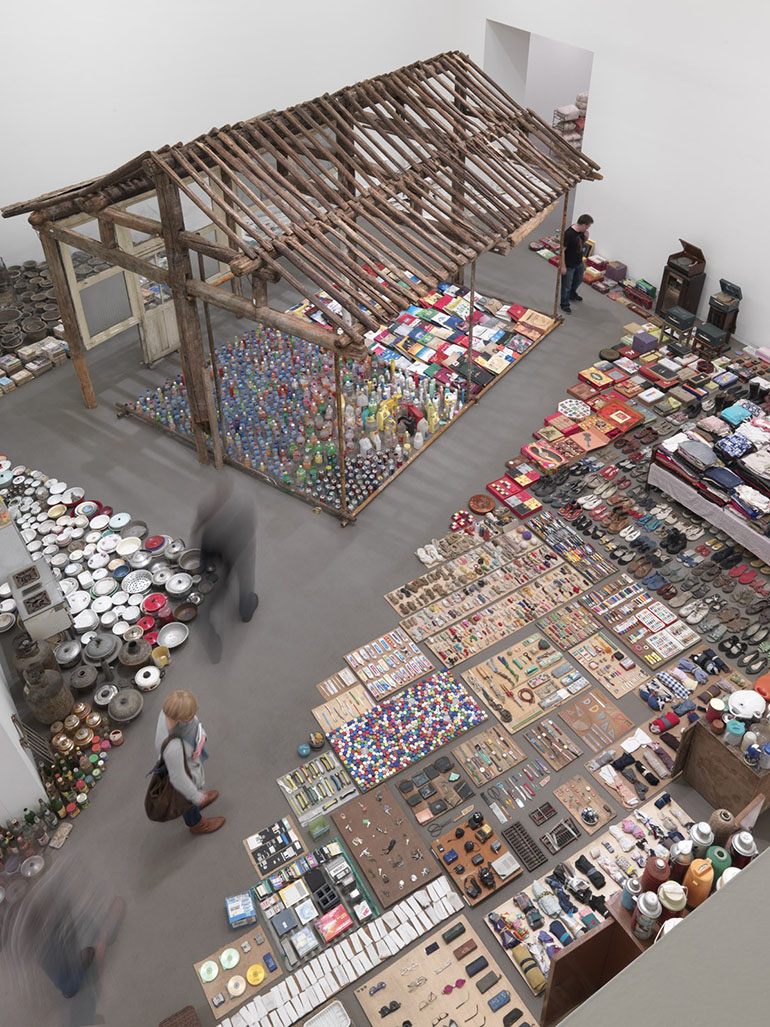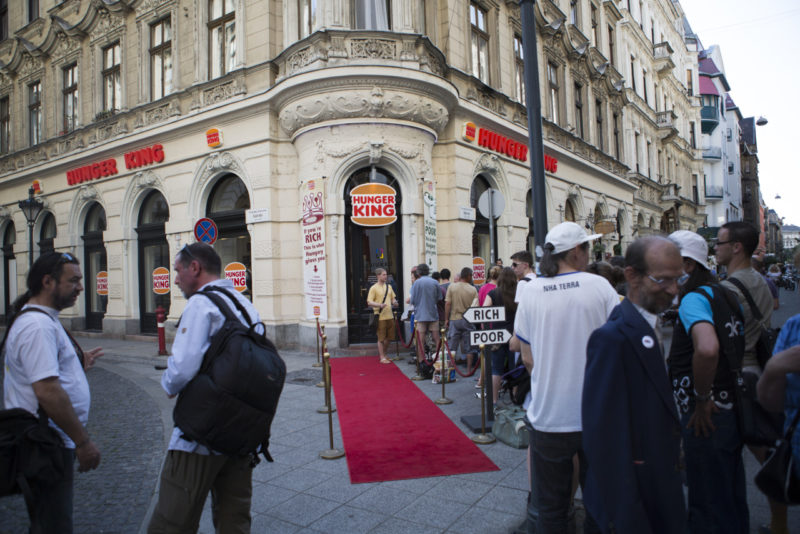
What was Hunger King?
Located behind a resplendent Opera House in Budapest 1 on the same road as Louis Vuitton sits Hunger King, a place that seems to be just like any other burger joint. However, it is anything but. Hunger King is a regular fast food outlet that is pushed onto the masses; Hunger King is a critical sociopolitical art installation 2 that highlights Hungary’s 3 significant crises of social inequality and homelessness 4.
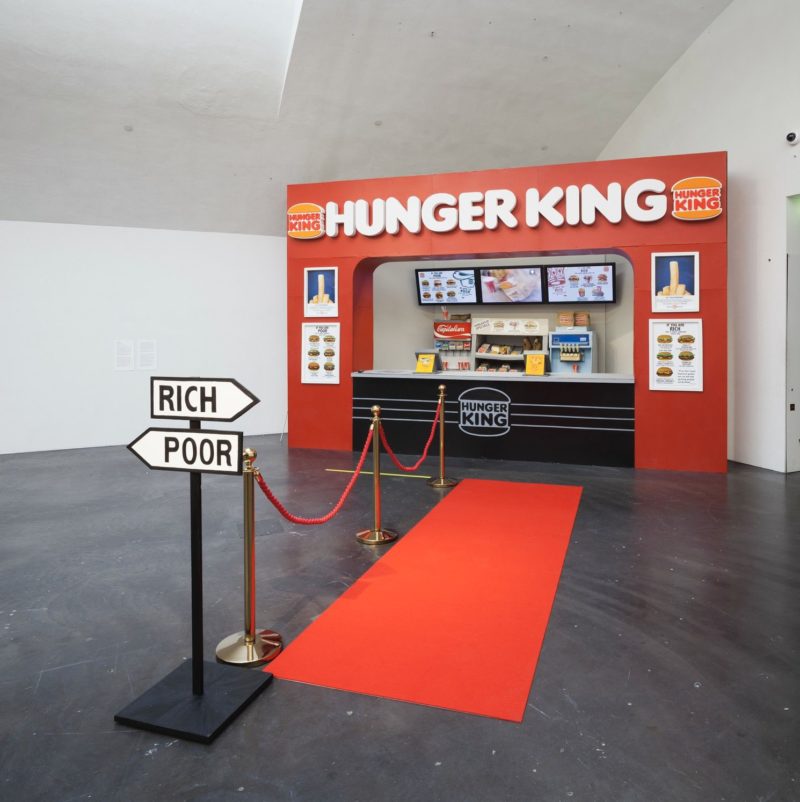
Different treatments for the rich & the poor
The sign at Hunger King directs customers who identify as “rich” onto a red carpet, which leads them to the entrance, while the succession of “poor”, many of which are homeless, takes them around the side of the building.
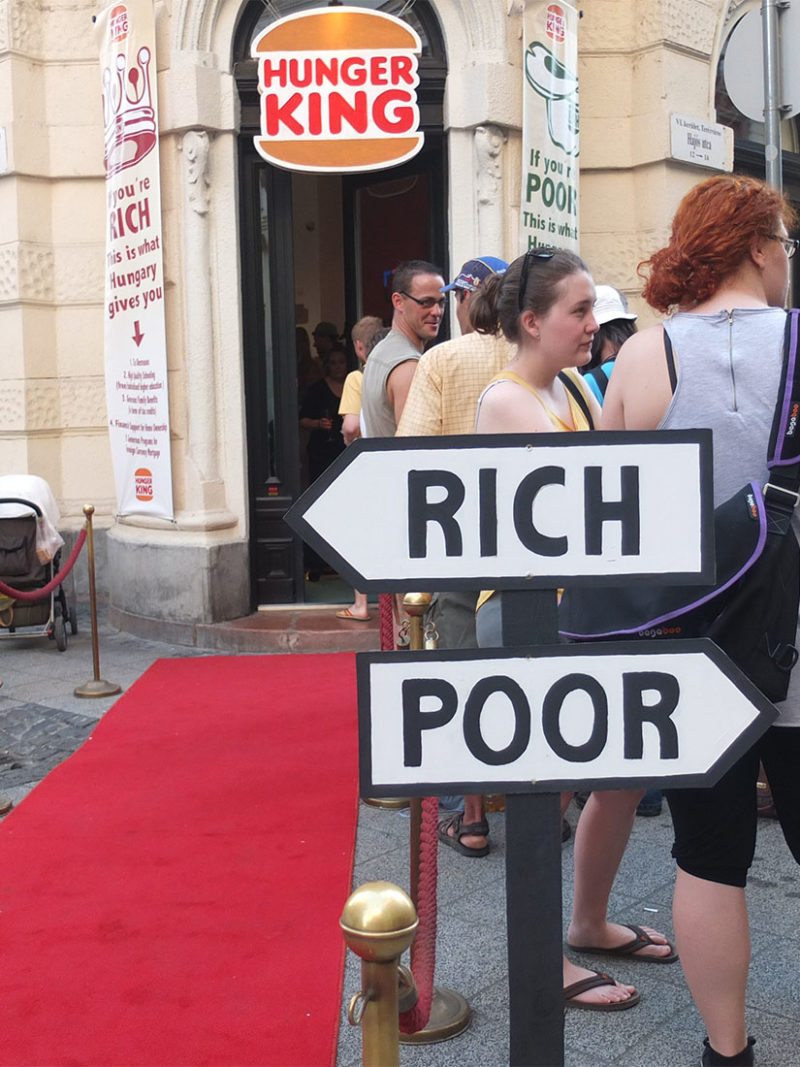
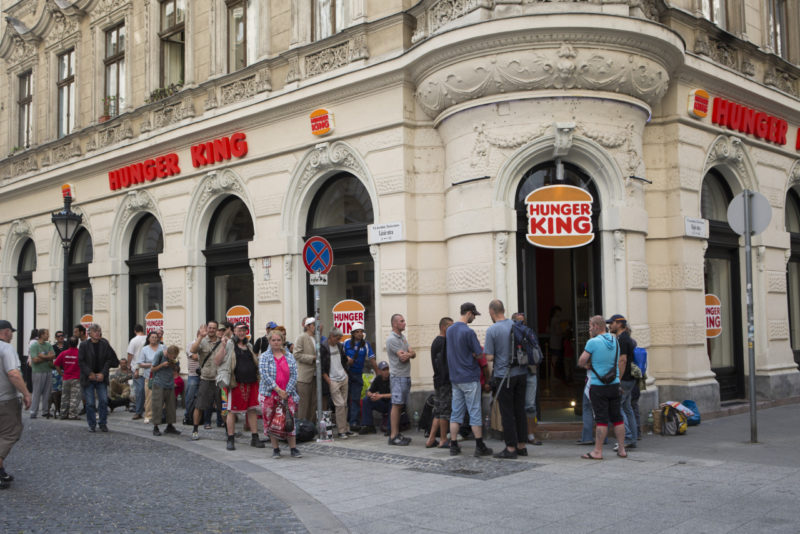
Poor people got free money
The sign that features a crown and burger logo is given a representational twist. It is given a new name, as it references the 3.7 million Hungarians living below the breadline. During the three-week-long installation, individuals who are in financial need have the ability to wait in succession around the building for six hours and, in turn, will receive 3,400 forints (around £9 or $13.60 US) in a burger box for their trouble. This would be the same amount of money they would have made by working a minimum-wage job in Hungary. All while, those who self-identify as rich can skip the line, walk up the red carpet and get burgers for 600,000 forints (£1,560 or $2357.39 US).
Video: Finnish Artist serves up free money in Hungarian capital
1 min 48 sec
Analysis
Analysis
Hunger King exemplifies how contemporary artists tackle societal issues through provocative 5 installations. This piece is part of a broader exploration of hunger in art 6, where creators use various mediums to highlight food insecurity and social inequality.
This three-week installation served as a critical response to a law that allows Hungarian councils to ban homeless people from sleeping in public areas, basically dispossessing the dispossessed. Those who are homeless and have little or nothing can be fined or even sent to jail for being out on the streets.
Jani Leinonen’s 7 work protests the “criminalization of homelessness” and somehow makes the lives of those who have little stability even more precarious.
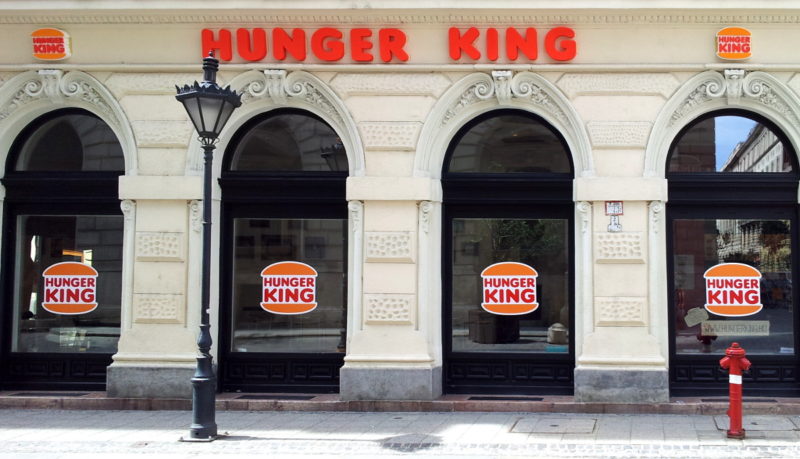

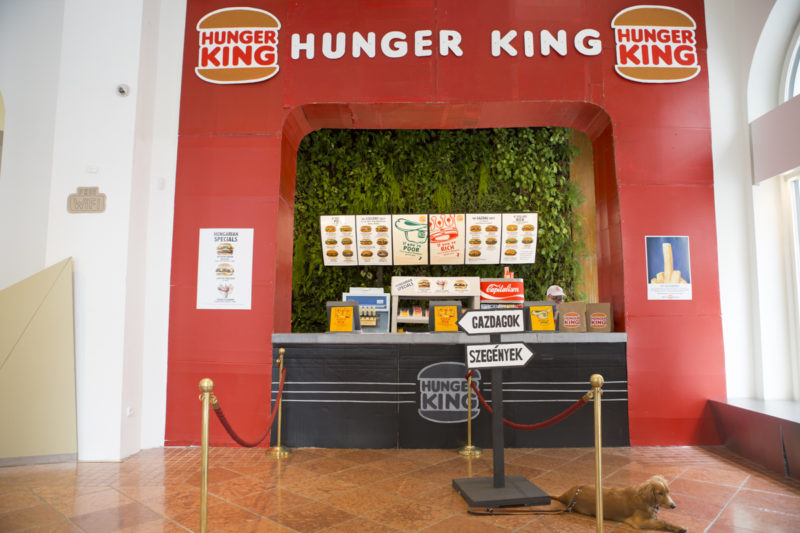
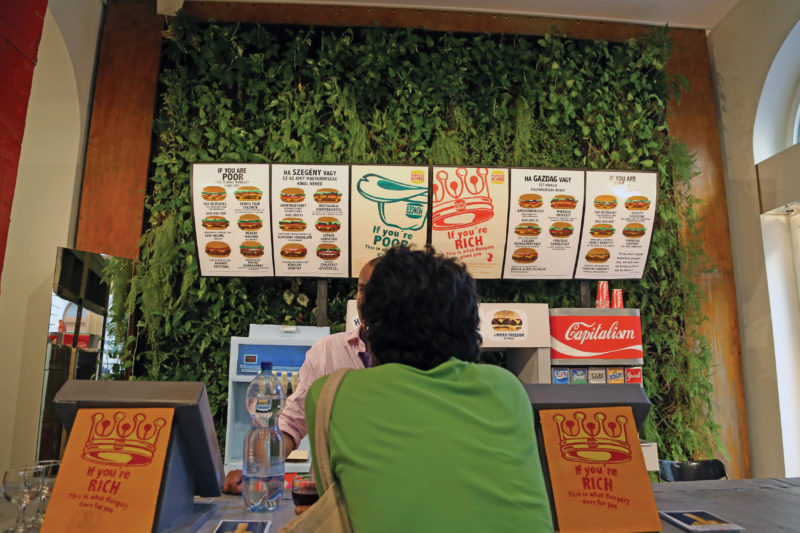
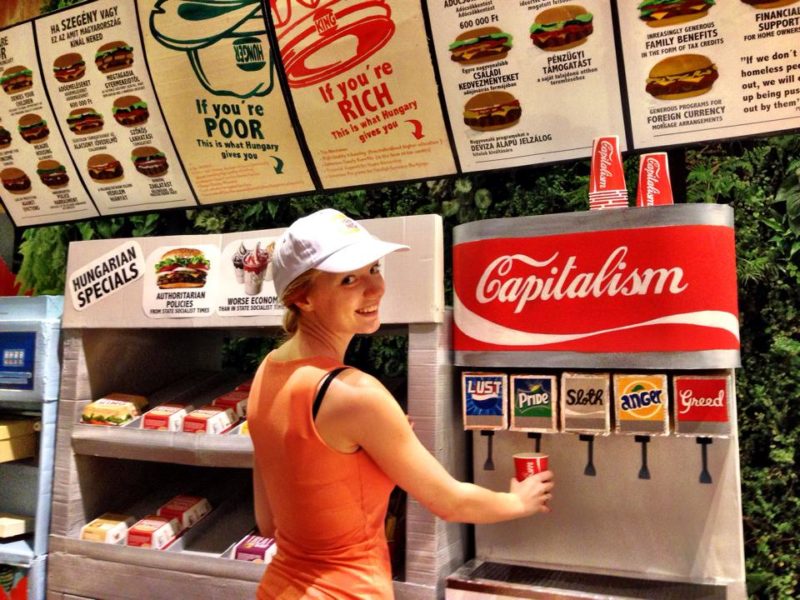
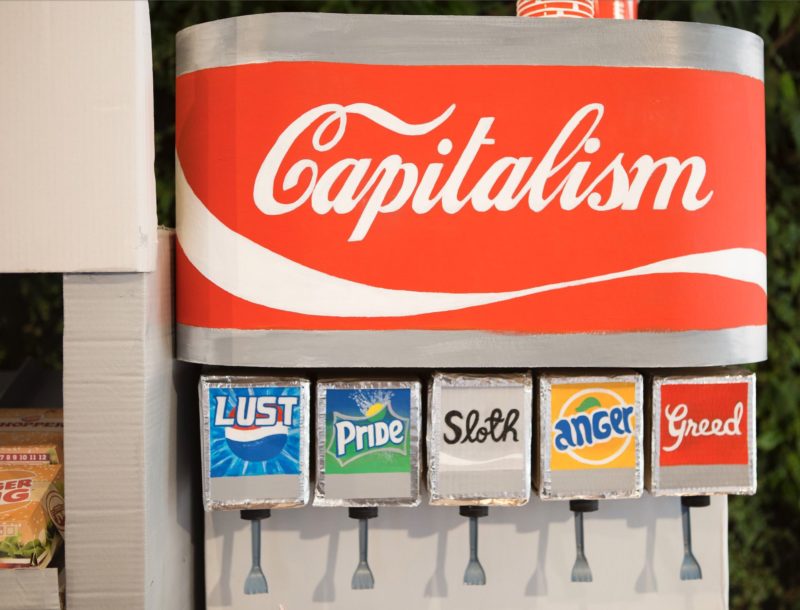
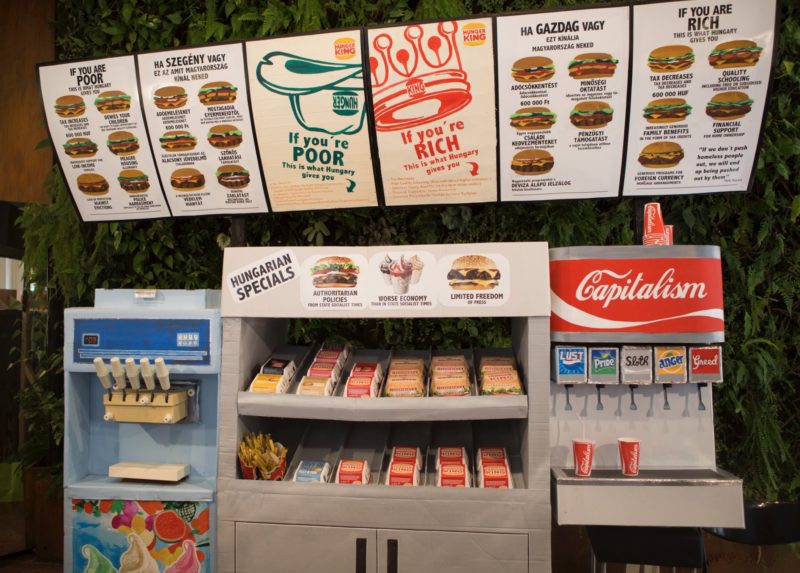


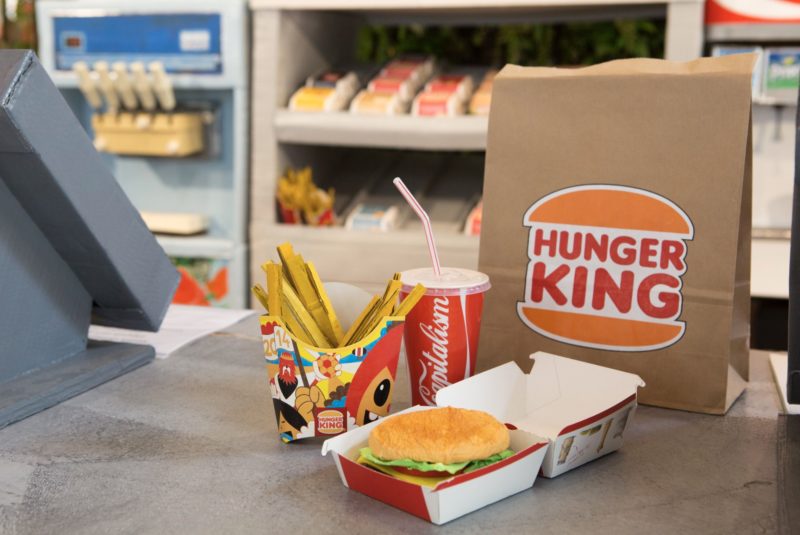
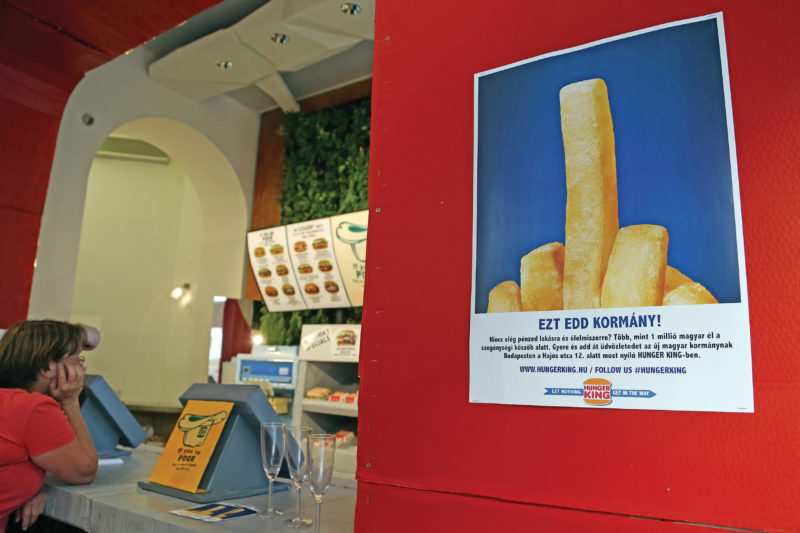
Explore nearby
Budapest, Hungary
 Franz West's sculptures214 km away
Franz West's sculptures214 km away Magdalena Jetelová's pyramid installationsExhibition ended (dismantled in 1992)215 km away
Magdalena Jetelová's pyramid installationsExhibition ended (dismantled in 1992)215 km away Vienna Opera's Safety Curtain215 km away
Vienna Opera's Safety Curtain215 km away Klaus Pichler behind the scenes of a museumPhoto documentation (2010)216 km away
Klaus Pichler behind the scenes of a museumPhoto documentation (2010)216 km away
